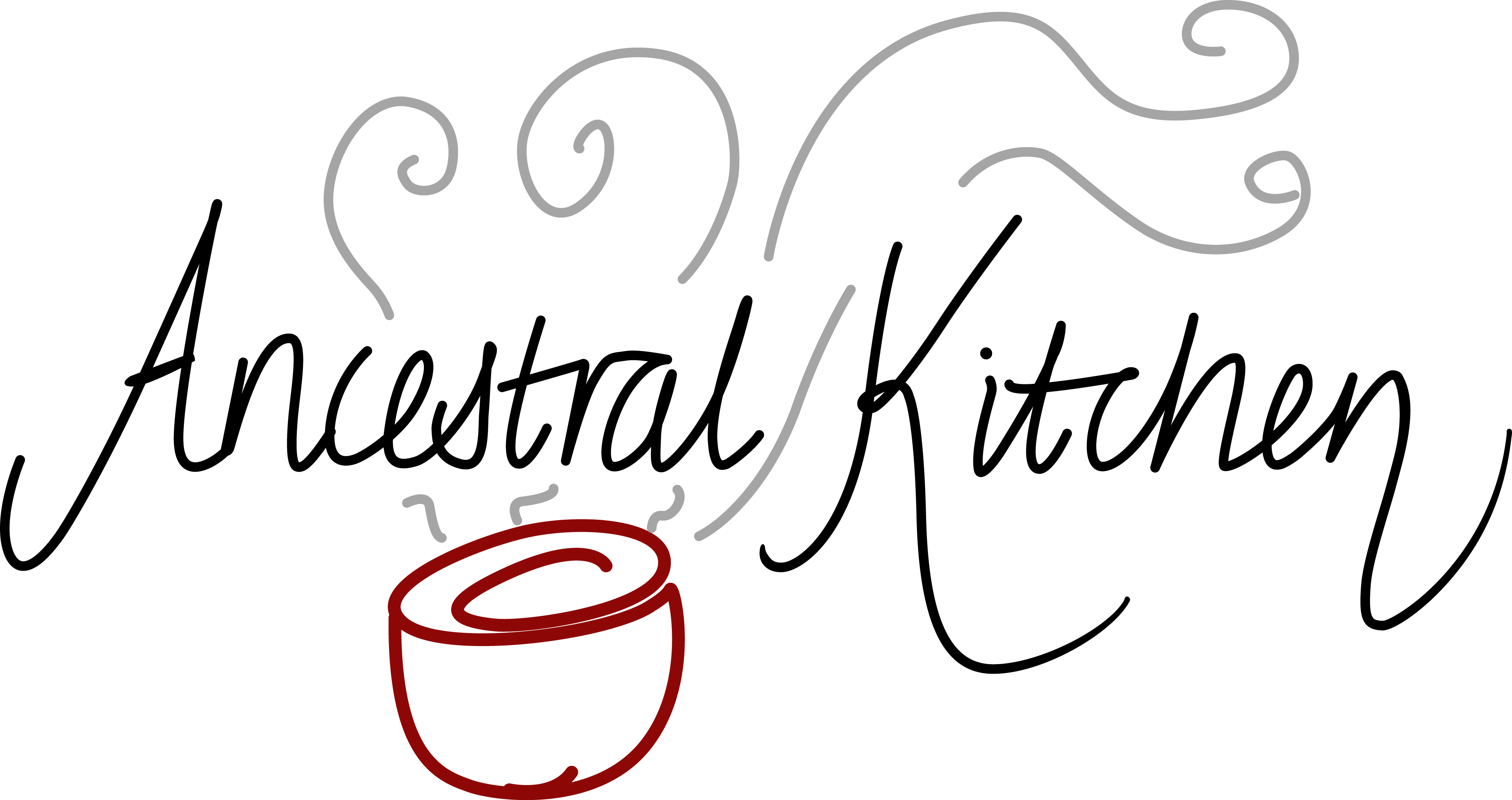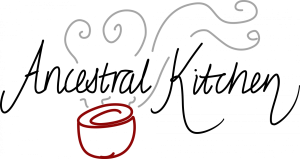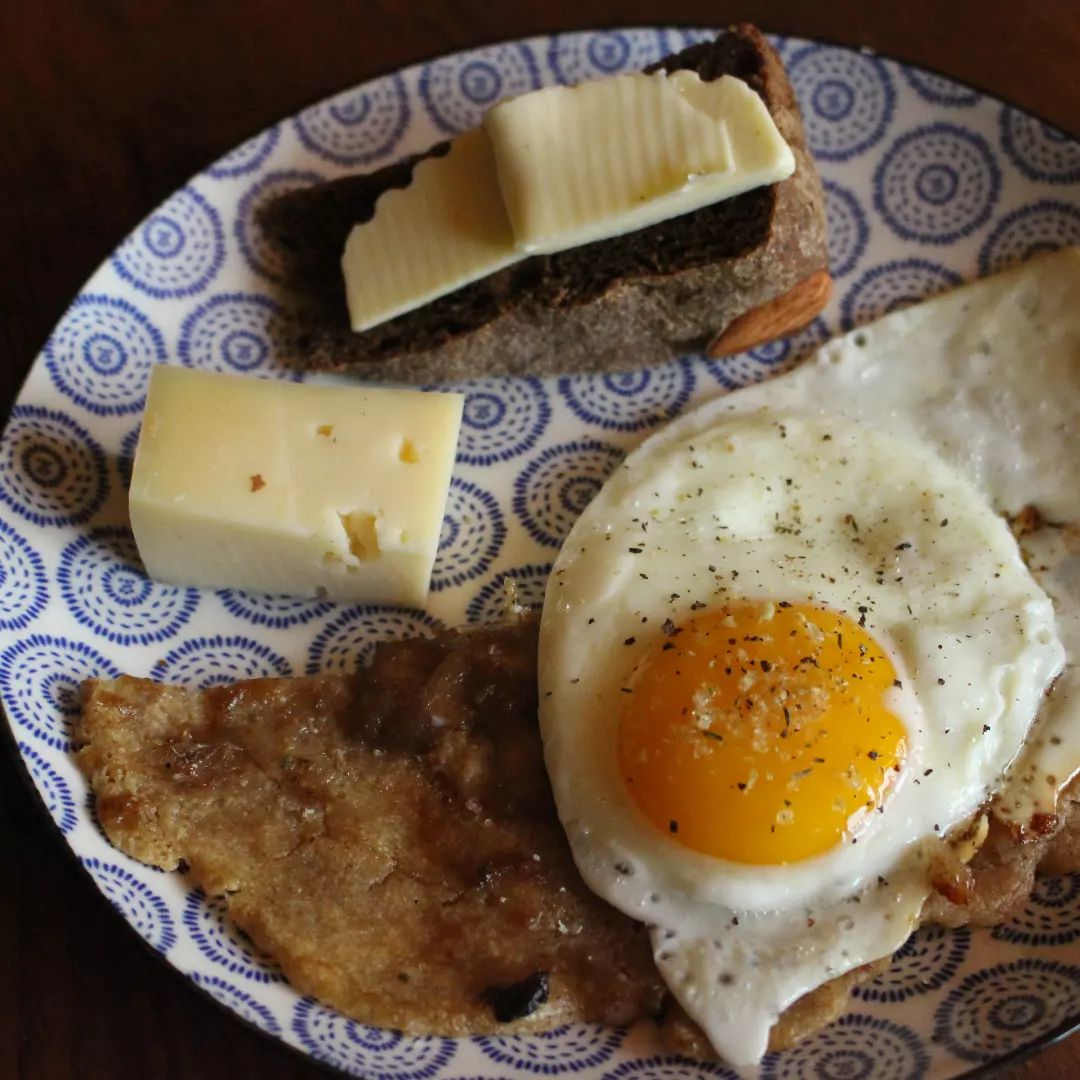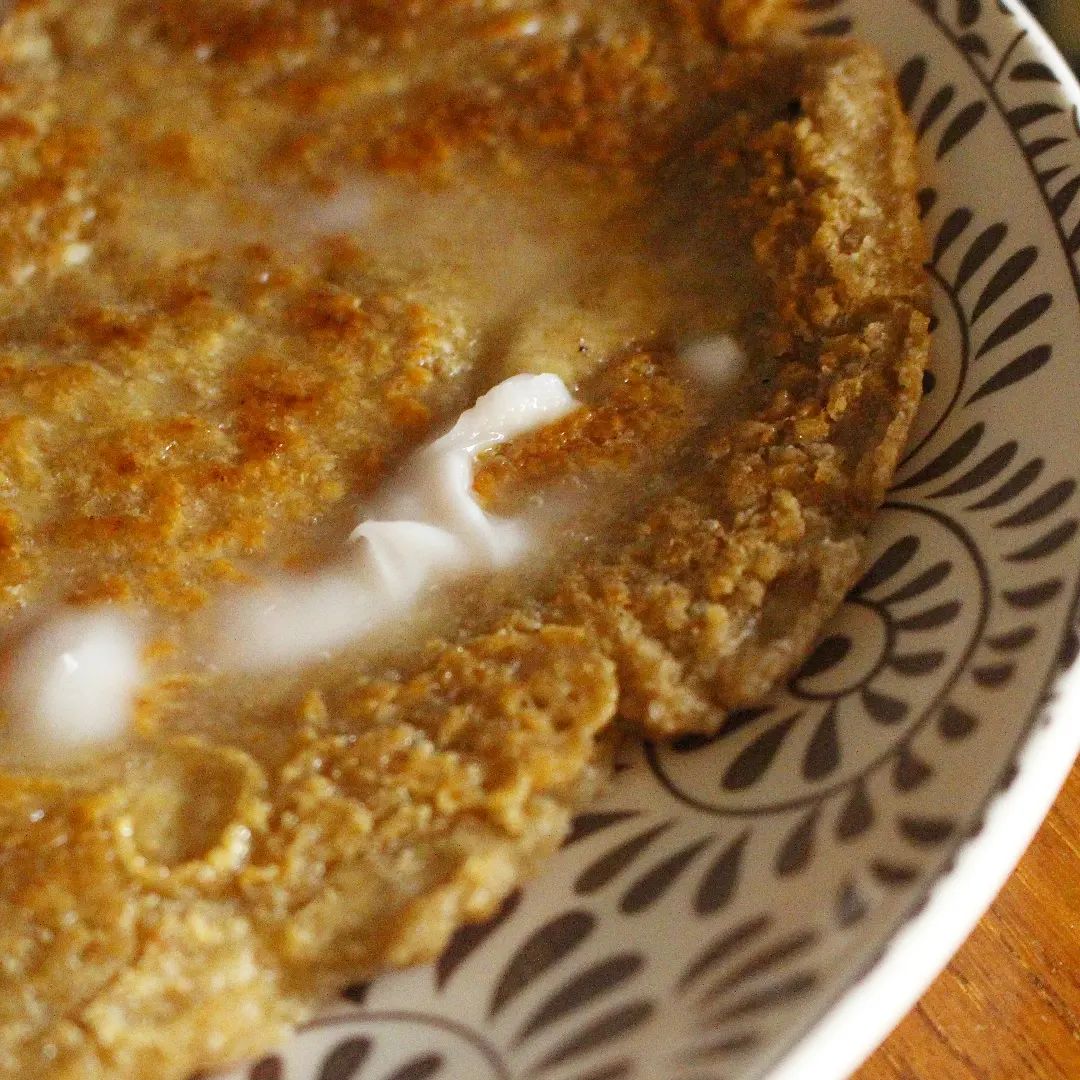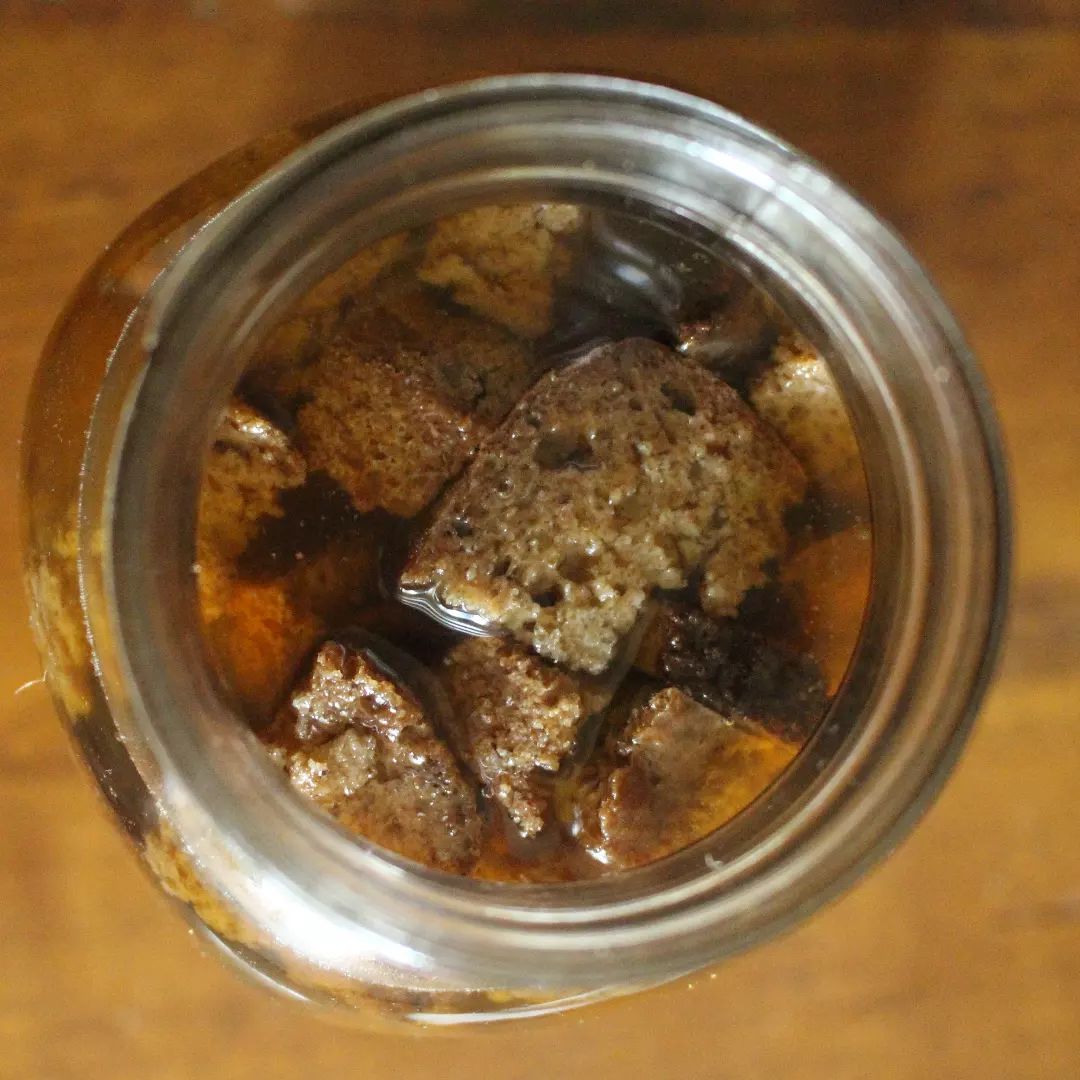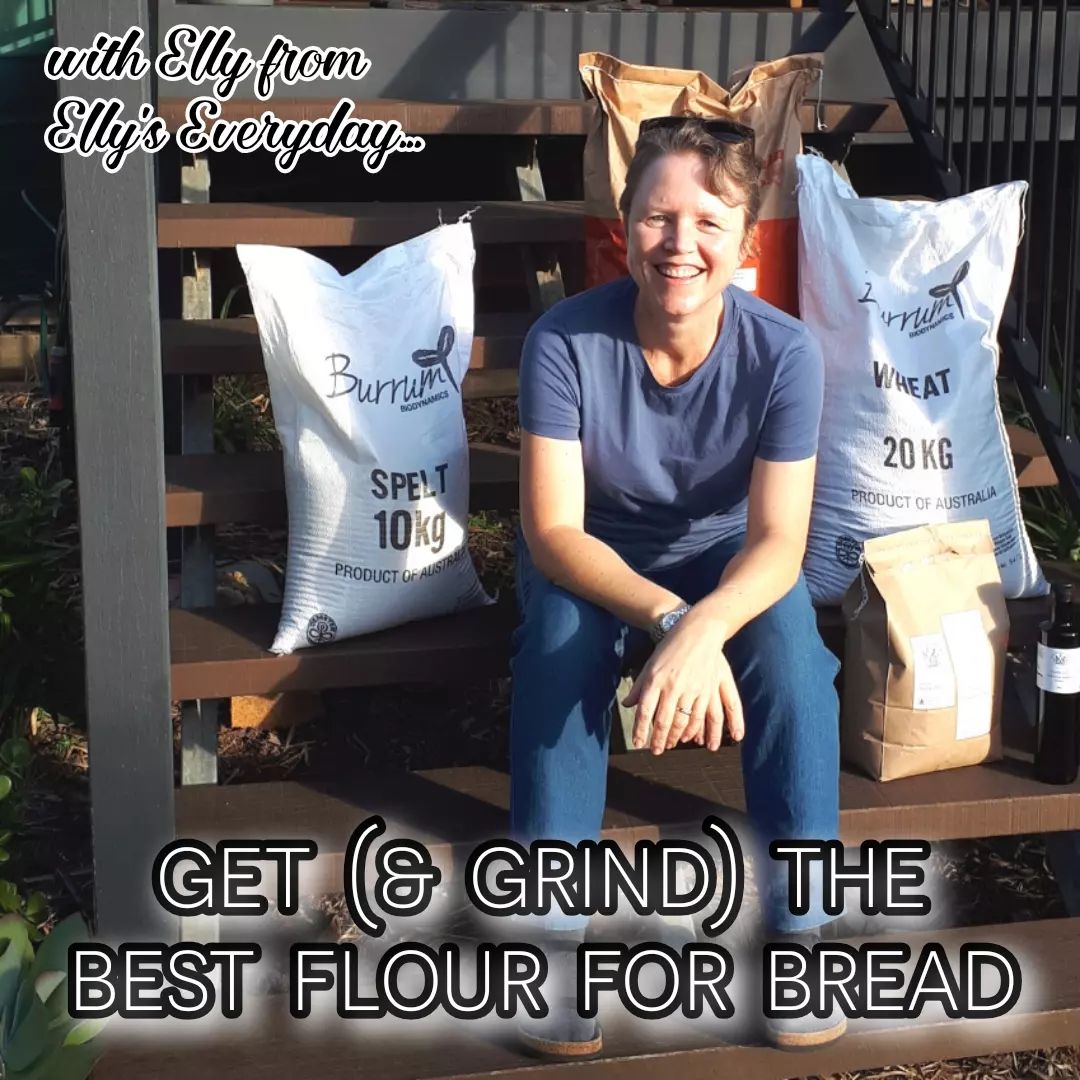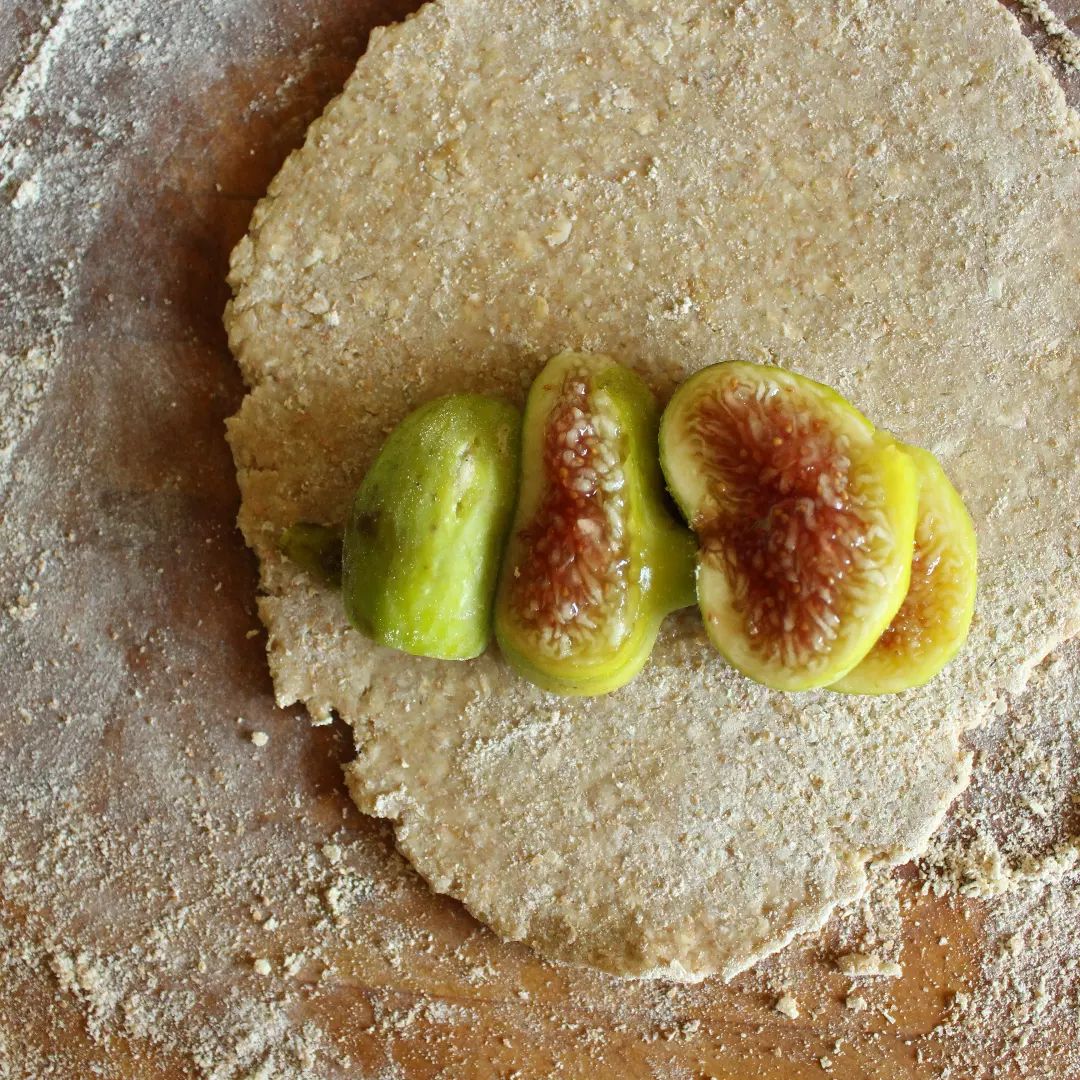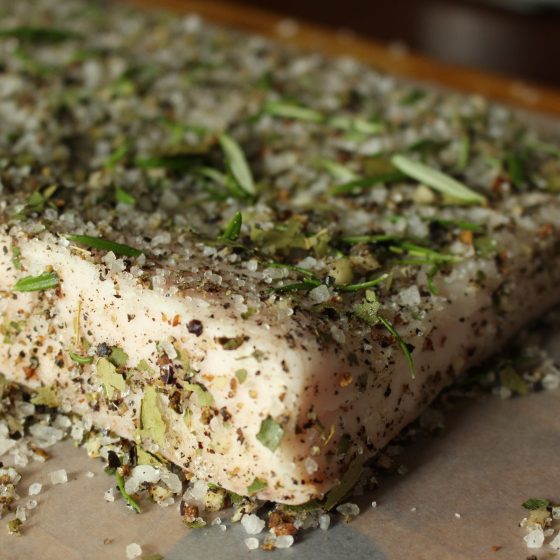What would you eat first? . The order in which we eat our foods fascinates me. I’ve historically been a “save the best for last” girl and I thought everyone did that till I quizzed my hubby, Rob, who eats he most appealing thing on his plate first. . I think perhaps there’s more wisdom in his choice. Often the last few years I’ve saved the best till last and then been to full to eat it. In the past, I would have eaten it anyway but I don’t anymore and am often sad that the ‘prize’ ends up going in the fridge for later!! . What do you go for first? And is it always that way? I think the ‘best’ food is subject to change, based on our moods, tastes, the weather and much more. . This was my supper one night this weekend. And here’s my order: First: The sourdough rye spice bread covered in salty butter. . Second: The fried egg yolk (with lemon and thyme salt sprinkles) with half of the super-sour rye discard pancake. . Third: The nobble of local ‘fresco’ pecorino cheese. . Last: The lard-crispy egg white and the last of the pancake. . Would you follow suit?! . (Recipes for the rye spice bread and pancakes are part of my course Rye Sourdough Bread: Mastering The Basics at @thefermentationschool – link in profile)
What would you eat first?
.
The order in which we eat our foods fascinates me. I’ve historically been a “save the best for last” girl and I thought everyone did that till I quizzed my hubby, Rob, who eats he most appealing thing on his plate first.
.
I think perhaps there’s more wisdom in his choice. Often the last few years I’ve saved the best till last and then been to full to eat it. In the past, I would have eaten it anyway but I don’t anymore and am often sad that the ‘prize’ ends up going in the fridge for later!!
.
What do you go for first? And is it always that way? I think the ‘best’ food is subject to change, based on our moods, tastes, the weather and much more.
.
This was my supper one night this weekend. And here’s my order:
First: The sourdough rye spice bread covered in salty butter.
.
Second: The fried egg yolk (with lemon and thyme salt sprinkles) with half of the super-sour rye discard pancake.
.
Third: The nobble of local ‘fresco’ pecorino cheese.
.
Last: The lard-crispy egg white and the last of the pancake.
.
Would you follow suit?!
.
(Recipes for the rye spice bread and pancakes are part of my course Rye Sourdough Bread: Mastering The Basics at @thefermentationschool – link in profile)
